So let’s be real: there are over 500 different pastas, and probably hundreds of different sauces. Take any pasta dish and simply switch one of those two things, and you have an entirely new dish. It’s probably the most modular cuisine on the face of the planet. Hell, pasta is basically the food equivalent of IKEA!
That is why pasta is one of my favourite foods. Italian food is so honest in a lot of ways. It is one of the few cuisines that aren’t drastically different between classes. This is contrary to a lot of other western foods, like British food. For example, a swanky restaurant in England, you would be hard pressed to find fish and chips, even though it’s a staple in most restaurants. Meanwhile, If you order spaghetti from a high end Italian restaurant, or a casual family diner the recipe is going to be very similar. Obviously, if the respective restaurants are true to their price points, one will use higher quality ingredients, fresher non-prefab products, and put more time and love into the product but the dishes are similar in concept.
That being said, Spaghetti Aglio e Olio is something I love to make. Fresh made pasta tastes like nothing else, and is simple to do. You can use store bought dried pasta, but I really recommend trying it fresh. The less ingredients a recipe has, the more important the quality of the ingredients are. What amazes me is watching the starch from the noodles bind with the oil and the water to make a mind-blowing, amazing sauce!
So before I get into the recipe, here are some facts you should know about pasta dough.
There are very few problems you can have with pasta dough that ‘resting’ the dough won’t fix. To do that, cover with plastic wrap, or a moist tea towel, and let sit for 10 mins. If the problem persists, wait an hour. More than likely, it will be fine.
Pasta dough is very much like a muscle. If you’re rough with it, the dough will become stiff and hard to work with. if you’re too gentle nothing will happen at all. You want to be firm, but not aggressive so it will stay nice and soft. If you find that after rolling it, it quickly recoils back to the original shape, it means the dough is too ‘tense’, and need a ten minute rest.
Kneading the dough is the exception to the above. You want to be aggressive when kneading.
The dough becoming too dry is one of the few things that is very difficult to fix, and it’s easier to start over. A sign of this is crumbles apart.
This recipe is for one portion. So multiply it by the number of people you want to serve!
Pasta Dough Ingredients:
- 1/4 cup Semolina Flour
- 1/4 cup All Purpose Flour
- 1 egg
- 1/2 T of olive Oil
- 1 pinch of salt
‘Sauce’ ingredients
- 3-5 Cloves of Garlic
- 1/4 Cup of Olive Oil
- 1/4 Cup of reserved pasta water
- 1.5 t red chilli flakes
First let’s make the Noodles:
Mix both flours together, then pour into a mound on a baking sheet. Push the centre of the mound down, so it resembles a volcano.
- Pour the egg(s), oil and salt into the centre of the mound of flour.
Using a fork, beat the liquid together, as you do it, you should see the flour become incorporated into the egg mixture. If the flour ‘springs a leak’, just block it with some of the flour from around the mound.
Once the mixture has become solid ball of dough, start kneading it. The best way to do this, is to fold be dough in half, sticky side on the inside of the fold. Then put both palms on top of the dough, and push down and forward on it. Repeat the motion again until you notice that the dough has become elastic, and tense. A good sign it’s done is when it ‘recoils’ after you knead it. You can’t ‘over knead’ pasta dough, so if your not sure, do it a few more times. I should also note, that when I am pushing down on the dough, I lift my body up so I’m on my tip toes, this uses my body weight to my advantage. If it’s too sticky, lightly and evenly sprinkle the excess flour on the dough. If there is none left, you can take some fresh flour, but do so sparingly.
Wrap the dough in plastic wrap tightly. I find the best way to do this is to wrap the wrap around the dough and twisting the ends of the plastic wrap. It should look like a giant wrapped candy.
- Let rest for twenty minutes. If you’re making this in advance, you can leave it in the fridge for a week.
- If you don’t have a pasta machine, I strongly suggest you get one. They run about $40 CAD. They tend to be one trick ponies, but what they do, they do very well. If you don’t have one, then you can use a rolling pin, or a cylindrical wine bottle; whichever is closer. You want to create gluten (a protein that holds the noodles together) and so it is the correct size. to do this:
- If you’re using a Pasta Machine:
- Remove your Dough from the plastic and set your Pasta machine to the widest setting where the rollers are farthest apart
- Fold the dough to go through the machine perpendicular to the rollers, or so the fold goes through the rollers first. This will allow any trapped air
to escape. Run the Dough through the machine 4 to 5 times until the dough feels elastic. Every time you run it though the machine, you’re creating more gluten. You’ll notice the outside of the dough starts to feel more ‘dry’ after a couple of runs though the machine. If the dough is 1/8″ thick, move on to the next step, or else lower the setting on the machine by one, and repeat the above step
- If you’re using a rolling pin:
Remove the dough from the plastic and roll it up into a log. Cut the log into 1.5-2″ rounds.
- Roll each round out one at a time, keep the unrolled dough on a plate under a damp tea towel, and the rolled dough lightly dusted in flour stacked gently on top of each other.
- To roll out each round, place it on a lightly floured surface. you want to be very gentle with your dough, at least at first. Start at the centre of the disk, roll outwards, then repeat in the opposite direction turn the dough 90 degrees.
- If the dough is 1/8″, flour the dough, place under tea-towel, and move on to the next step, or repeat processes with the next round.
- If you’re using a Pasta Machine:
- If you’re using a Pasta Machine:
- simply cut the pasta dough to the length you want the noodles
- Run the pasta through the spaghetti cutter attachment
- If you’re not using a Pasta Machine:
Gently roll the floured dough into a log
cut the log width wise, each cut should be the same width you want the noodles. Unroll each cut piece of dough into your noodles.
Let’s make the final dish:
- Fill a pot on high heat with salted water. How much salt you need depends on how much water there is. The rule of thumb is the water should ‘taste of the sea’. Personally, if I’m using fresh pasta dough, I use less water; about an inch higher then the noodles should be fine. I say this because fresh noodles cook so fast that ultimately less starch is released into the water. In this recipe, you want the pasta water to be as starchy as possible, so by using less water, you get a higher concentration of starch.
- While the water is boiling, bias cut your garlic into rounds.
- Once the water has boiled, put the olive oil in a pan on medium heat and add the garlic right away. If you’re using store bought dried pasta, place it into the boiling water now, if you’re going fresh, wait for the garlic to get soft and slightly turn brown, This is the perfect time to throw in your fresh noodles.
- Once your garlic is golden brown and delicious, add an the now starchy water from used to cook the noodles. The amount should be equal to the amount of olive oil you used. Pour it in carefully, because you don’t want the oil to splash you.
- Mix in your crushed chilli and cooked noodles, no need to dry them, and especially don’t rinse them.
- Take a fancy photo, and post it to Instagram with the hashtag #foryourfoulmouth


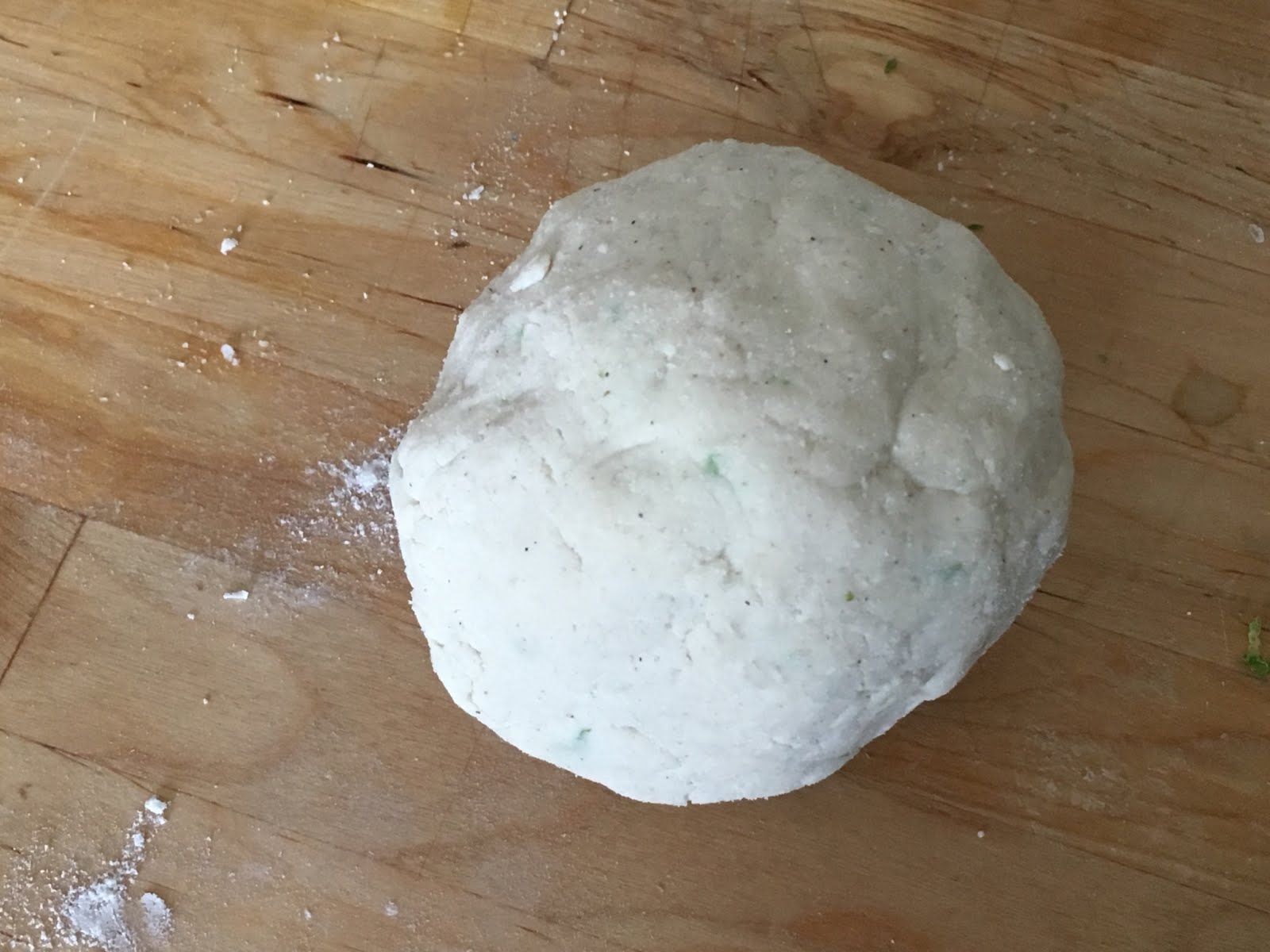 Divide the ball into 4, and roll each section into its own ball. Cover all of them with plastic wrap.
Divide the ball into 4, and roll each section into its own ball. Cover all of them with plastic wrap.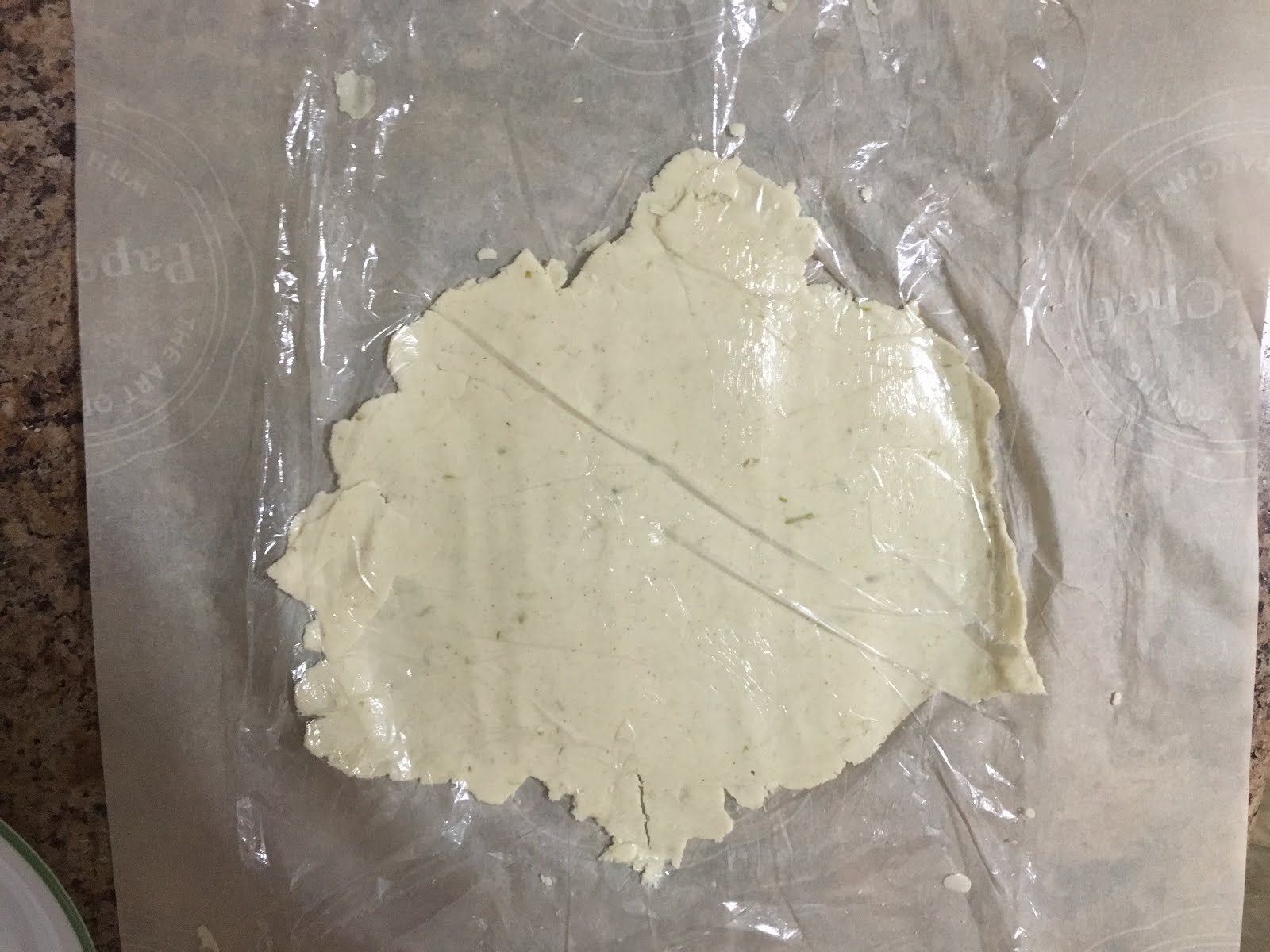 Use a rolling pin to roll the dough ball just until it’s wider than a soup bowl. Make sure to roll back and forth and side to side. FYI: At first your plastic wrap may cling to the dough causing it to curl upward. Simply lift the plastic wrap off the dough, gently place the dough down and put the plastic back. If the parchment becomes wrinkled, simply pull its corners.
Use a rolling pin to roll the dough ball just until it’s wider than a soup bowl. Make sure to roll back and forth and side to side. FYI: At first your plastic wrap may cling to the dough causing it to curl upward. Simply lift the plastic wrap off the dough, gently place the dough down and put the plastic back. If the parchment becomes wrinkled, simply pull its corners.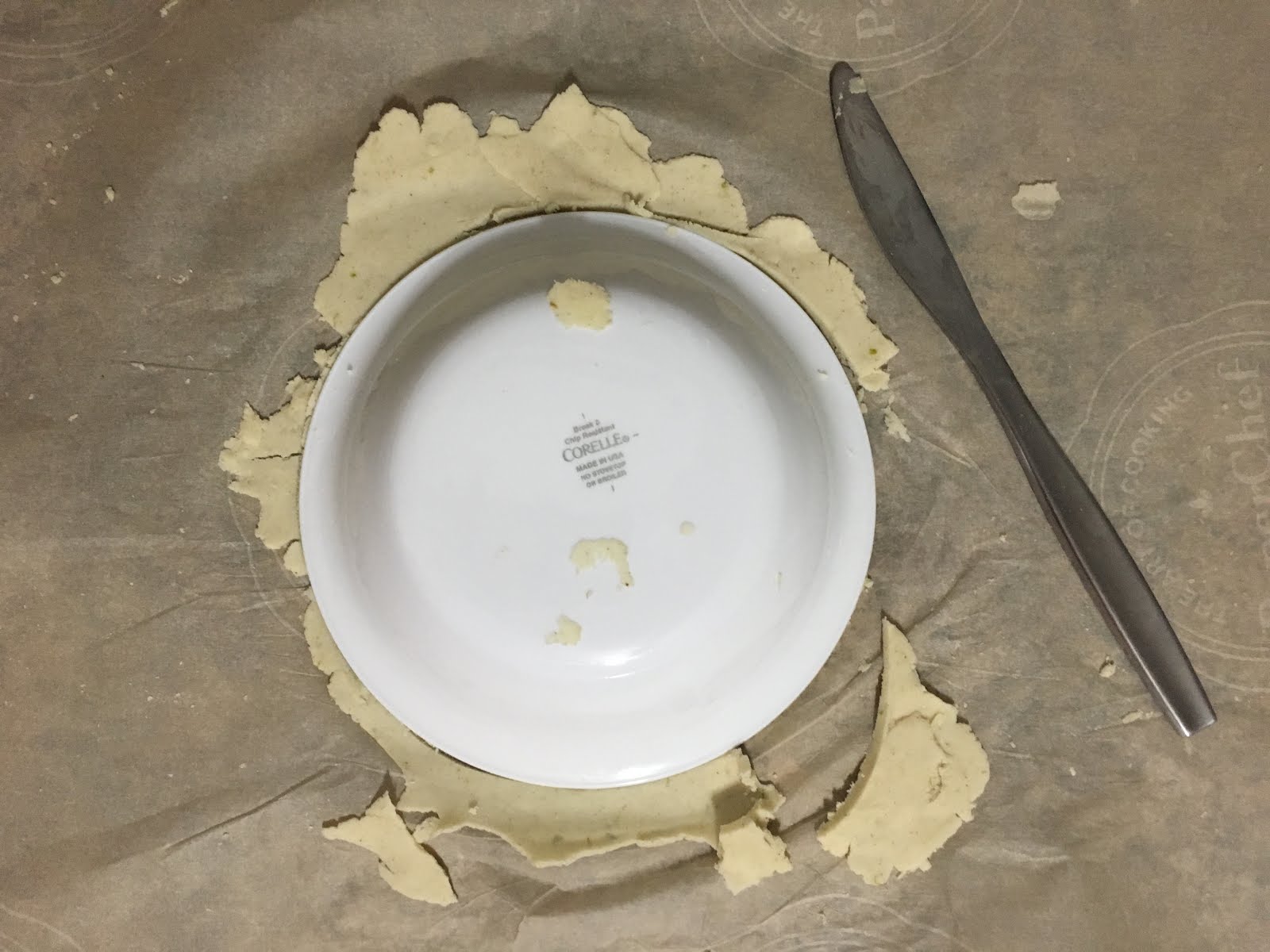 Gently remove your plastic wrap and place a bowl upside down on your dough, using a butter knife cut around the rim of your bowl, this will give you perfectly shaped tortillas. Use the scrap pieces to fill any cuts, are place the rest to the side. There is no gluten in Masa, so you don’t have to worry about over working it.
Gently remove your plastic wrap and place a bowl upside down on your dough, using a butter knife cut around the rim of your bowl, this will give you perfectly shaped tortillas. Use the scrap pieces to fill any cuts, are place the rest to the side. There is no gluten in Masa, so you don’t have to worry about over working it.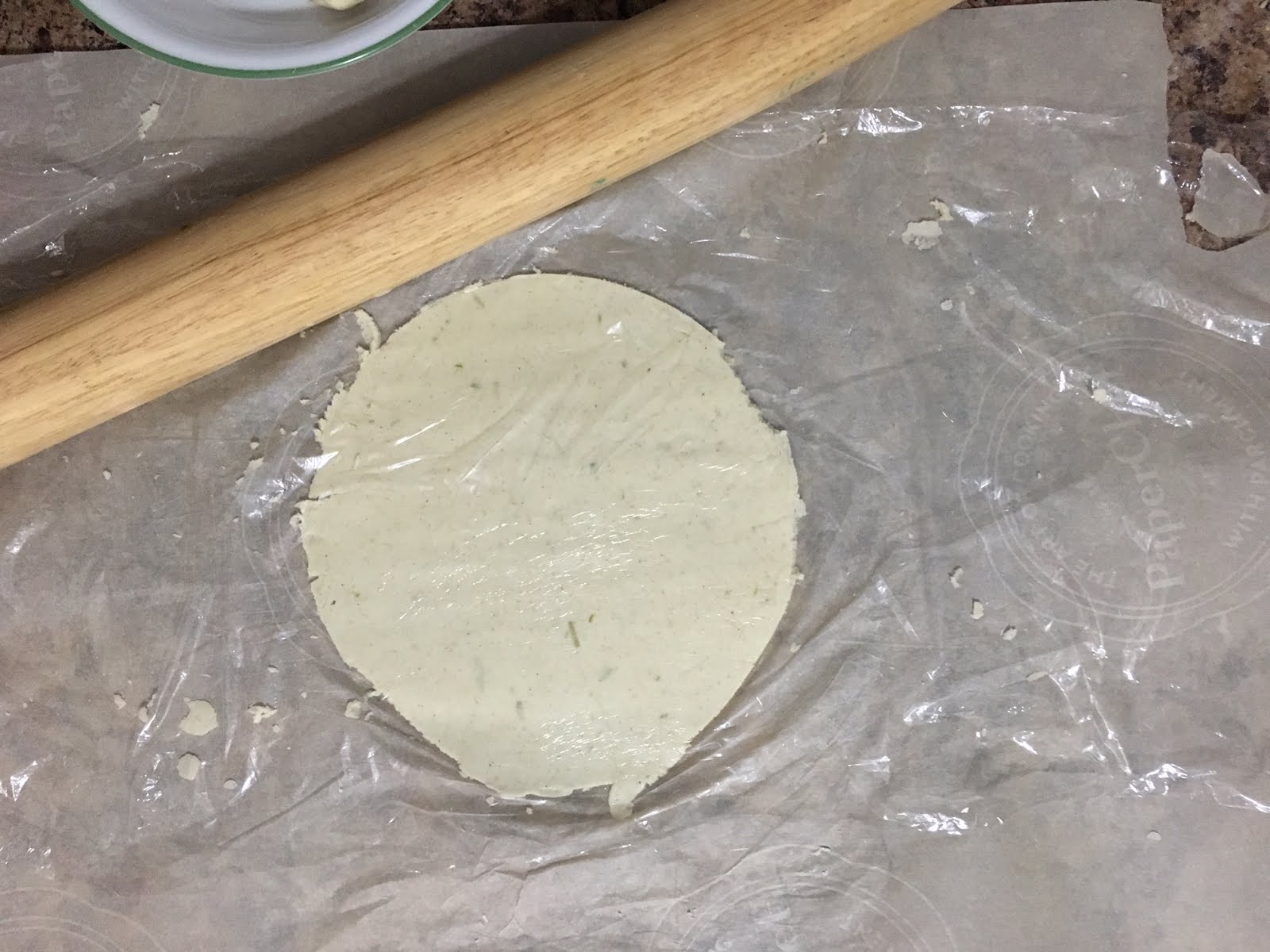 Place the plastic wrap back on top of the dough and use rolling pin thing out the tortilla to about 1/6″
Place the plastic wrap back on top of the dough and use rolling pin thing out the tortilla to about 1/6″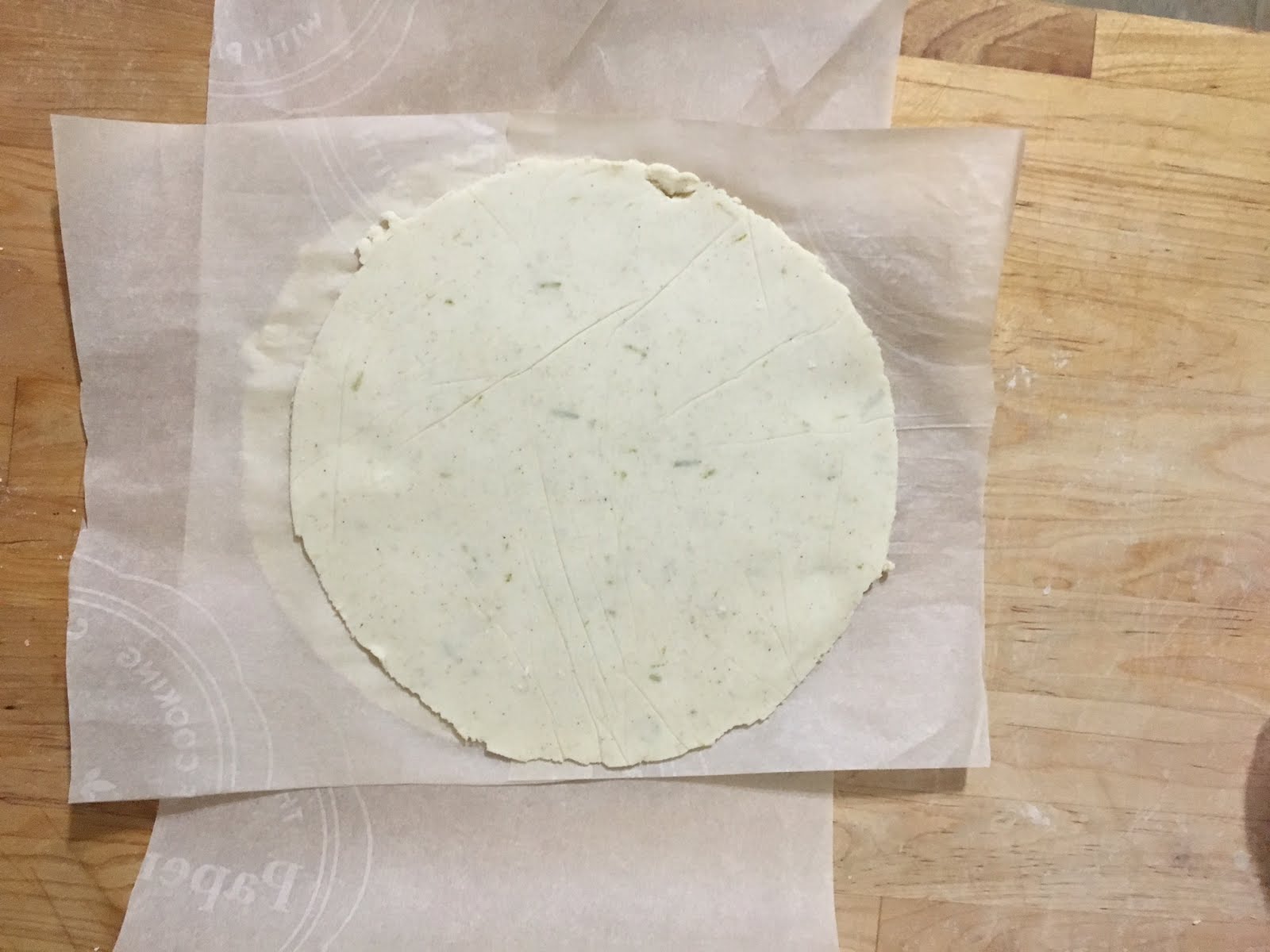 Slowly peel the tortilla off the parchment, and place on the side till you’re ready to cook them. I place all the tortillas on top of each other with a piece of parchment paper to separate them. Cover with plastic wrap, or damp cloth.
Slowly peel the tortilla off the parchment, and place on the side till you’re ready to cook them. I place all the tortillas on top of each other with a piece of parchment paper to separate them. Cover with plastic wrap, or damp cloth.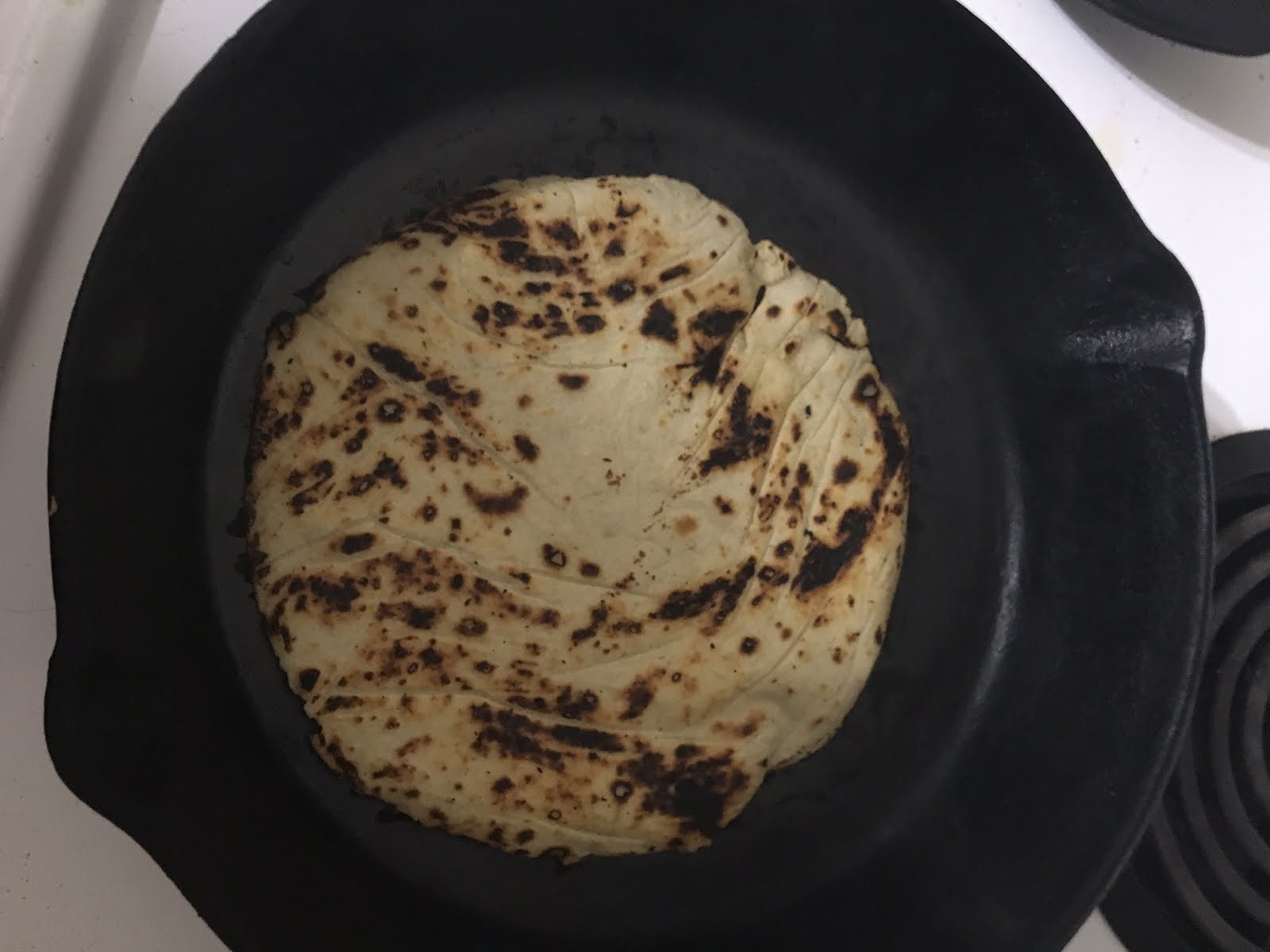 Cook each tortilla one at a time on a non greased cast iron pan set to high heat. If you don’t have cast iron, you can use a stainless steel pan, but you will have to wait longer in between cooking each tortilla for the stainless to regain its heat. It should take about 30-40 seconds on the first side, and about 20 seconds on the other side. They may puff up, thats a good thing, it means they are well rolled.
Cook each tortilla one at a time on a non greased cast iron pan set to high heat. If you don’t have cast iron, you can use a stainless steel pan, but you will have to wait longer in between cooking each tortilla for the stainless to regain its heat. It should take about 30-40 seconds on the first side, and about 20 seconds on the other side. They may puff up, thats a good thing, it means they are well rolled. Using tongs, pick up a cooked tortilla, and lower it into the oil so that only half of it is frying. Using the a wooden spoon push down any big bubbles that form.
Using tongs, pick up a cooked tortilla, and lower it into the oil so that only half of it is frying. Using the a wooden spoon push down any big bubbles that form.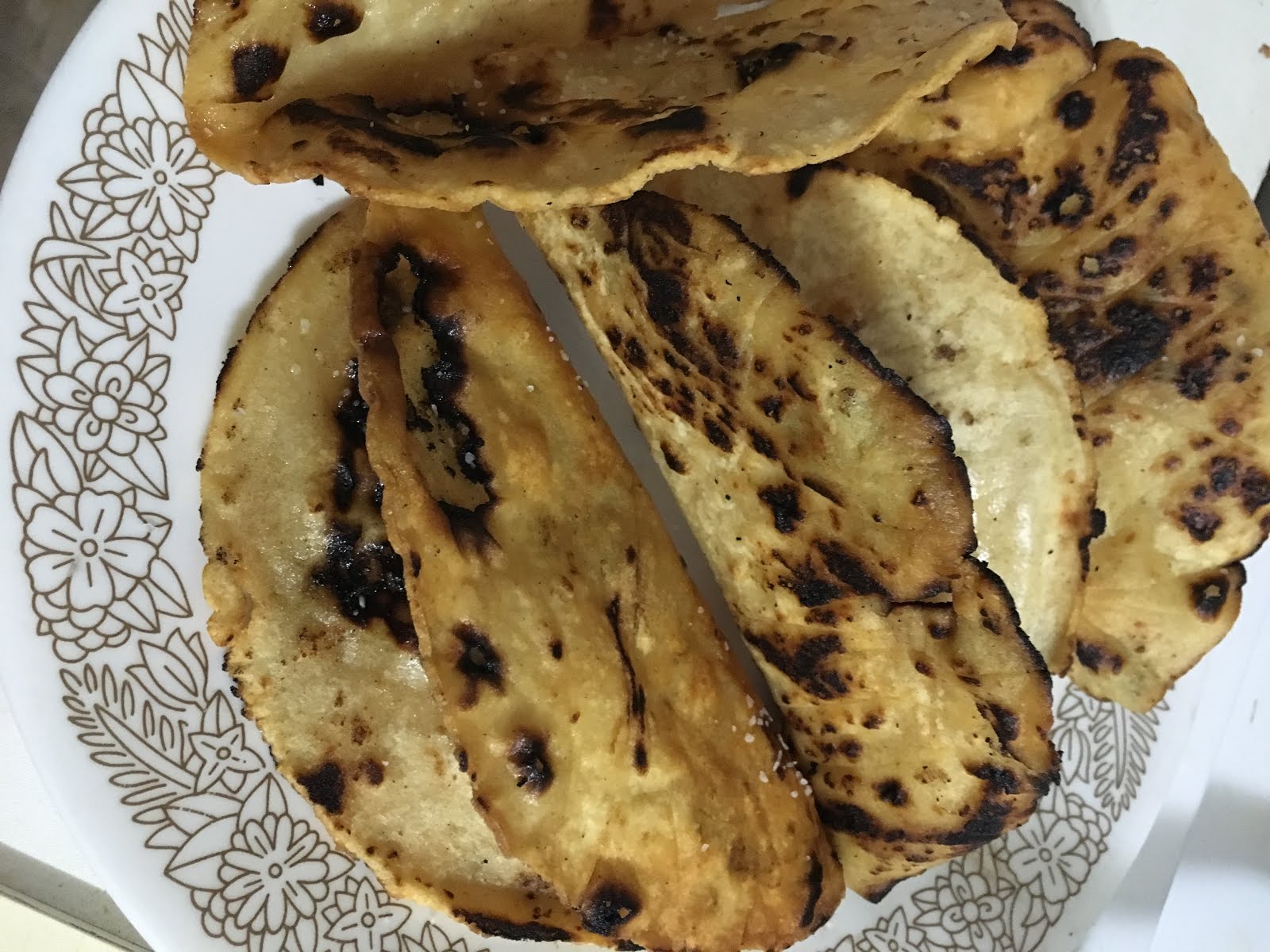 Once the shell holds its shape, move to the side and sprinkle with salt.
Once the shell holds its shape, move to the side and sprinkle with salt.